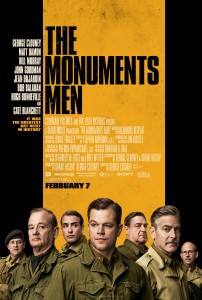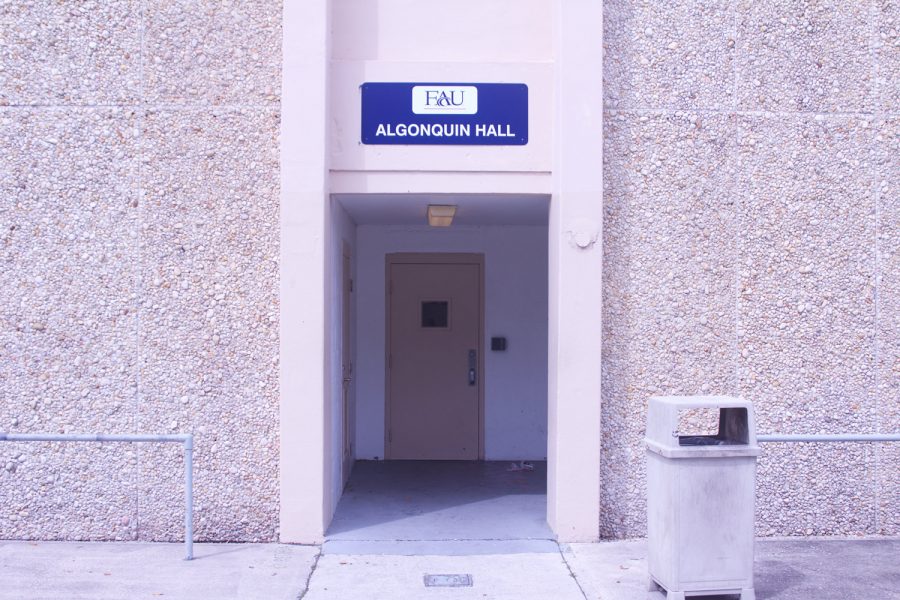 Here’s an idea for a story: In the waning months of World War II, the Nazis are in full retreat back to Germany and are scrambling to hide or destroy all of their ill-gotten gain. In response, the Western Allies form a team of art historians, sculptors, architects, restorationists and museum curators to track down, reclaim and preserve Europe’s millennia of cultural history for the good of future generations.
Here’s an idea for a story: In the waning months of World War II, the Nazis are in full retreat back to Germany and are scrambling to hide or destroy all of their ill-gotten gain. In response, the Western Allies form a team of art historians, sculptors, architects, restorationists and museum curators to track down, reclaim and preserve Europe’s millennia of cultural history for the good of future generations.
It certainly sounds like a good idea, doesn’t it? Hell, reading that, you can probably picture in your head a film of daring treasure rescues, tense mysteries and larger-than-life quirky characters.
So the question is, where is that movie, and why couldn’t I have seen that one instead of “The Monuments Men”?
That may sound harsh, so let me say it straight: this is by no means a bad film, but it’s not the story that it could have been, should have been and deserved to be.
The movie opens with art historian Frank Stokes (portrayed by writer/director George Clooney) briefing Franklin D. Roosevelt just prior to the D-Day landings. Stokes is giving a lecture on the importance of preserving culture and great works in a time of war, even though it might interfere with the whole “killing Nazis” part of World War II movies that everyone takes for granted. In all seriousness, it’s a nice point to make and it’s a welcome change of focus from other World War II movies, most of which never really get past the whole “killing Nazis” bit.
What follows is a montage of Stokes recruiting his colleagues to help him form a team to find and protect art in Europe as the allies are busy liberating it. He’s aided by his close friend and first recruit, James Granger (Matt Damon), a museum curator. Together, they recruit a sculptor (John Goodman), a theater director (Bob Balaban), and an architect (Bill Murray). Along for the ride are a Brit with daddy issues (Hugh Bonneville) and a Frenchman in a beret (Jean Dujardin), both of whom take up the “token Non-American” slots on the team roster. Eventually, the men are joined by a Jewish private played by Dimitri Leonidas, who serves as the “token German-American” of the team, thereby ticking on the boxes on the “Diverse & Quirky Cast” sheet.
This is the first big issue with the film. Those character summaries are basically about as much depth as any of them get. Murray, Goodman and Balaban’s characters are all name-checked a grand total of once in the film (if that, you can basically replace character names with actor names and the movie will still make as much sense), and while they get plenty of screentime and even a few nice character moments, it never amounts to much because the film doesn’t bother to develop them beyond their introductions. Bonneville and Dujardin’s characters are likewise given little attention (though Bonneville’s is the character who comes the closest to actually having any sort of character development as the story goes), and they’re shuffled out of the film so quick that they might as well come with expiration dates.
The only characters even named repeatedly are Clooney and Damon, both of whom still come off as rather flat. Clooney’s Stokes is essentially Danny Ocean in a lieutenant’s uniform and a mustache and Damon is, for lack of a better term, basically playing Good Will Nazi Art Hunting. Really, all of the actors are basically playing variants of their default on-screen personas — and that’s actually for the best. Anywhere else this would be a bad thing, but here it actually saves the script’s minimal characterization by simply providing more. The performances are strong all around. These guys clearly had a lot of fun with their parts, but even great actors like these can only do so much. They’re entertaining, certainly, but only deep by the standards of a puddle.
I didn’t make that “Ocean’s 11” reference for nothing. The plot as a whole is in the same vein, though judging by it’s slow pacing, someone must’ve slipped the scriptwriters some Xanax. After a strong initial setup of the team forming up in Britain and then arriving in France a month after D-Day to start their work, the movie’s pacing slows down and begins to move in a lurch-then-pause-then-repeat fashion like a broken old car. The team soon splits up and the scenes become a bit formulaic– guys find a clue, guys chase clue, guys arrive too late to stop Nazis, guys report back to Clooney via radio, repeat.
Interspaced with this is a roundly annoying subplot about Damon’s character having to work with a Parisian secretary (Cate Blanchett putting on her best Pepe Le Pew accent) who witnessed a lot of the German theft of art and kept a record of it. She (I can’t remember hearing her name, Claire, more than twice) seems to have been created from two different characters who had their parts stapled together, as one moment she’s informing the resistance of places to steal back French art and the next she’s locked up in a prison for collaborators, being an absolute bitch to the Allies because…reasons. She’s ludicrously inconsistent and is a sore spot in a slog of a second act. Really, how can we expect someone far-sighted enough to log and mark almost every stolen piece that she was able to lay eyes on to be so short-sighted as to blow off the Americans (because she’s afraid that they’ll steal the art themselves) and leave the art in the hands of the Nazis?
While the second act of the movie may be meandering and lacking in urgency, it is filled with some nice, enjoyable scenes where the actors get to showcase their great chemistry together and the movie allows for some good laughs. It also showcases the fantastic look and feel of the film, which seems to have been lifted wholesale from far more interesting works, like “Band of Brothers” or “The Longest Day.” The camera work is nothing short of stellar, the costumes and props are all spot on, and Alexandre Desplat’s musical score is a note-perfect overture right down the alley of John Williams or Michael Giacchino. All of this serves to elevate the movie above boilerplate average and it makes the sagging second half tolerable and at times even fun to watch, but like the great acting, it can only help out so much.
The third act is where the film picks up urgency, though in a rather dumb way. It’s marked by the “Nero decree”, Hitler’s order to destroy all looted art (along with lots of German infrastructure and scientific knowledge) if Germany fell or he died. This certainly adds an air of urgency to the overall atmosphere of the film, but scenes still play out slowly and the overall pace remains unchanged. Besides, as any history-savvy viewer would know, by this time of the war, the Germans are surrendering in droves to the Western allies and dying in droves on the Eastern front, so the war’s nearly over by this time. The writers clearly knew that, too, so they contrive a race against time to keep the urgency alive, pitting the American monuments men against their Soviet counterparts to see who can secure the remaining Nazi spoils. It comes off as feeling forced and artificial.
Wacky competition with the Russians aside, the third act is also where the film’s script rears its ugly head again, this time showing just how inconsistent the movie’s tone is. The film starts out on a high-spirited, light-hearted note that seems reminiscent of “Hogan’s Heroes”, but it gradually settles into a more traditional group-focused war film like “The Guns of Navarone,” but with the occasional comedic interlude. The film’s tail end tries to keep this darkly comedic attitude, but it runs up against the writer’s desire to put in the obligatory nods to how horrible the Nazis were. While this is admirable, it comes off as a bit on the nose and it’s not like we or the protagonists need any extra incentive to hate these guys.
Still, scenes like the team finding indicators of the Holocaust like barrels of gold teeth and earrings seem like they came out of a different film entirely, as the somber attitude present there is at odds with the more joking and fun nature of the movie as a whole.
“The Monuments Men” is a film that’s good at times and on the whole enjoyable, but it’s not a great film. It drags for too long, yet never goes anywhere. It has a big scope, but unclear focus. A story like this shouldn’t be limited to two hours if it’s going to be trying to keep multiple characters interesting. This story would be better suited to a longer movie, but I doubt that even a “Lawrence of Arabia”-length movie would do justice to the story that Clooney set out to tell, that of the real monuments men. Perhaps a TV miniseries would be best for something like this, but as it is, the story we got just doesn’t cut it.
I give “The Monuments Men” two and a half out of four stars. All in all, “The Monuments Men” is, to draw a World War II analogy, a lot like Operation Market Garden. It was made with the best of intentions, and had tremendous resources and world-class manpower behind it, but it ultimately proved to be A Bridge Too Far.







